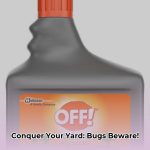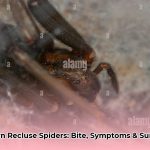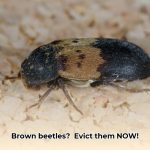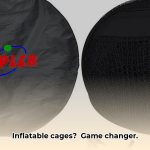Heard all the buzz about bamboo sheets? They’re everywhere, promising the coolest, comfiest sleep of your life. But are they really all that? Let’s ditch the hype and get real about bamboo bedding. We’ll break down how they’re made, what’s great about them (and what’s not so great), and whether they’re actually as eco-friendly as everyone says. Plus, we’ll compare them to other sheet types to help you figure out if they’re worth the splurge.
The Allure of Bamboo: Softness, Sustainability, and More
Let’s talk bedding—specifically, those trendy bamboo sheets. Are they really all they’re cracked up to be? The answer isn’t a simple yes or no. Like most things, there are pros and cons, and understanding them will help you decide if they’re right for you.
Understanding Bamboo Fabric: Viscose, Lyocell, and Modal
First, “bamboo sheets” can be a bit misleading. Most aren’t woven directly from bamboo strands. Instead, they’re made from bamboo that’s been processed into a fiber called viscose. Bamboo is pulped, dissolved, and then spun into yarn, which is then woven into sheets.
Beyond viscose, there are other bamboo-based fibers, like lyocell and modal. Lyocell is made similarly to viscose, but the chemicals used are recycled, making it more environmentally friendly. Modal is known for its exceptional softness and drape. So, when shopping, knowing the fiber type is crucial, as it affects feel, durability, and eco-friendliness.
The Upsides of Bamboo Sheets: Comfort and Potential Benefits
Many people rave about bamboo sheets’ softness, often comparing it to silk but with added breathability. This breathability comes from bamboo’s moisture-wicking ability, keeping you cool and dry. If you tend to overheat, bamboo might be your new best friend.
Bamboo is also often hypoallergenic, making it a good choice for allergy sufferers. Dust mites, mold, and mildew are less likely to thrive in bamboo fibers. Durability is another potential benefit, though proper care is essential.
The Downsides of Bamboo: Wrinkles, Cost, and Environmental Concerns
No bedding material is perfect. Bamboo sheets can wrinkle, and while generally durable, pilling can occur. One concern is the manufacturing process. While bamboo is a renewable resource, the viscose process sometimes uses harsh chemicals which, if not managed responsibly, can pollute the environment. Lyocell bamboo sheets offer a more eco-friendly alternative. Cost is another factor. Bamboo sheets can be more expensive than high-end cotton.
Eco-Friendly or Not? Separating Fact from Fiction
Bamboo’s sustainable reputation isn’t entirely unfounded. It grows quickly, requires less water than cotton, and doesn’t need pesticides. However, the manufacturing process can be problematic. As mentioned, viscose production can involve harsh chemicals. Look for certifications like Oeko-Tex (ensures the fabric is free of harmful substances) and FSC (Forest Stewardship Council, which promotes responsible forest management). Lyocell and modal generally offer a more eco-conscious choice.
Caring for Bamboo Sheets: Tips for Longevity
Proper care is key to maximizing the lifespan of your bamboo sheets. Wash them in cold water on a gentle cycle, and avoid harsh detergents and chlorine bleach. Tumble drying on low is acceptable, but air drying is preferable.
Buying Bamboo Sheets: A Quick Guide
When shopping, consider the weave. Sateen weaves are silky and luxurious, twill offers a crisper feel, and percale is breathable. Think about your preferences and choose accordingly.
Bamboo vs. Other Bedding: A Head-to-Head Comparison
| Feature | Bamboo | Cotton | Linen | Silk | Microfiber |
|---|---|---|---|---|---|
| Softness | Very Soft | Soft | Crisp, softens with use | Extremely Soft | Soft |
| Breathability | Excellent | Good | Excellent | Good | Fair |
| Moisture-Wicking | Excellent | Good | Excellent | Good | Poor |
| Durability | Good | Excellent | Excellent | Delicate | Fair |
| Cost | Moderate to High | Moderate | High | Very High | Low |
| Eco-Friendliness | Varies (Viscose, Lyocell, Modal) | Moderate | Excellent | Moderate | Poor |
This table provides a general overview. Specific qualities can vary.
The Verdict: Are Bamboo Sheets for You?
It depends. Bamboo sheets offer softness, breathability, and potential sustainability. However, they can wrinkle and be expensive. Consider your needs, preferences, and budget to make an informed decision.
The Unseen Side of Bamboo Sheets: Are They Really Worth the Hype?
Okay, so bamboo sheets: silky smooth, cool, and eco-friendly. But before you buy, let’s discuss the potential downsides.
The Price Tag: A Luxury Expense?
Bamboo sheets can be pricey, often costing more than cotton. This is due to the complex process of transforming bamboo stalks into fabric.
Care Instructions: More Than Just a Wash and Dry?
Bamboo sheets require more care than cotton. Specific washing instructions, gentle detergents, and low-heat drying are essential.
Wrinkles and Pilling: An Inevitable Reality?
Bamboo sheets can wrinkle and pill over time, impacting their appearance.
Eco-Friendly Claims: Always True?
Bamboo is renewable, but the manufacturing process, particularly for viscose rayon, can involve harsh chemicals. Look for lyocell or modal and certifications like OEKO-TEX Standard 100.
Clammy Sheets?: A Humidity Issue?
Bamboo’s moisture-wicking can backfire in humid environments, leading to a clammy feeling.
| Feature | Pros | Cons |
|---|---|---|
| Softness | Exceptionally soft, similar to silk or cashmere | Can lose softness over time with improper care |
| Temperature Regulation | Breathable and moisture-wicking, generally cool | Can feel clammy in humid climates |
| Durability | Can be durable with proper care | Prone to wrinkles and pilling |
| Eco-Friendliness | Bamboo is a sustainable resource | Manufacturing process can involve harsh chemicals; look for lyocell or modal alternatives |
| Cost | Generally more expensive than cotton | Price can be a significant barrier for some |
Weigh these pros and cons carefully to decide if bamboo sheets are right for you.
Bamboo vs. Cotton Sheets: The Ultimate Guide to Choosing the Right Bedding
Let’s dive into the bamboo versus cotton debate.
Decoding “Bamboo”
“Bamboo” sheets are often rayon, meaning the bamboo plant has been chemically processed. Lyocell and modal are other options. Do your research.
Texture and Comfort
Bamboo is known for its silky smooth texture. Cotton’s texture varies from crisp percale to smooth sateen. The “better” fabric depends on preference.
Temperature Regulation
Both are breathable. Bamboo wicks away moisture, potentially keeping you cooler. Cotton, particularly percale, is also breathable. The ideal choice depends on your sleep temperature and climate.
Durability
Durability depends on the manufacturing process and weave for both bamboo and cotton.
Hypoallergenic Properties
Bamboo is often hypoallergenic. Organic, unbleached cotton can also be suitable for sensitive skin.
Sustainability
Bamboo is a fast-growing renewable resource. However, its processing can involve chemicals. Organic cotton is a more sustainable alternative.
Care
Both are generally machine washable but check care labels.
Cost
Bamboo sheets are often more expensive than cotton.
| Feature | Bamboo (often Rayon) | Cotton |
|---|---|---|
| Texture | Silky, smooth | Varies (crisp, smooth, etc.) |
| Breathability | High | High |
| Durability | Varies | Varies |
| Hypoallergenic | Often Yes | Sometimes |
| Cost | Higher | Lower |
The best choice depends on your individual needs and preferences.
Are Bamboo Sheets Scratchy? Debunking the Myths and Unveiling the Truth
High-quality bamboo sheets shouldn’t be scratchy. They’re designed to be soft and luxurious. However, improper care or the type of bamboo material used can affect texture.
Improper Care: The Real Culprit
High heat from washing or drying can damage bamboo fibers, making them stiff and scratchy.
The Secret to Softness: Gentle Care
Wash bamboo sheets in cold water and air dry them or tumble dry on low.
Quality Matters
Choose 100% viscose from bamboo for optimal softness and durability.
Maintaining Softness
Proper storage and avoiding harsh chemicals are crucial for maintaining softness.
Bamboo vs. Other Materials
| Feature | Bamboo | Cotton | Linen |
|---|---|---|---|
| Softness | Exceptionally soft, silky smooth | Soft, but can become rough over time | Crisp, but can feel rough initially |
| Breathability | Highly breathable, regulates temperature | Breathable | Highly breathable |
| Durability | Durable with proper care | Durable | Highly durable |
| Drape | Luxurious, flowing drape | Can feel stiff | Tends to wrinkle |
| Cost | Mid-range to high-end | Affordable to mid-range | Mid-range to high-end |
Bamboo offers a good balance of softness, breathability, and luxury.
Eco-Friendliness
Bamboo is a sustainable resource, but the manufacturing process can involve chemicals. Look for Oeko-Tex certification.
Addressing Common Concerns
Wash new bamboo sheets a few times before using them to soften the fibers.
Buyer Beware
Always check the fiber content label to ensure you’re purchasing 100% viscose from bamboo.
By following these tips, you can enjoy the softness and comfort of bamboo sheets. Curious about other plants and pets? Check out these resources: Are button ferns toxic to dogs?[https://www.wavesold.com/are-button-ferns-toxic-to-dogs] Are foxtail ferns shade tolerant in Florida?[https://www.wavesold.com/are-foxtail-ferns-shade-tolerant-in-florida]
- Burning Plastic Smell in House: Causes, Solutions, and Safety Measures - April 8, 2025
- Best Bug Killer for Yard: Effective Pest Control Guide (2024) - April 8, 2025
- Brown Recluse Spider Bites: Identification, Treatment, and Prevention - April 8, 2025









